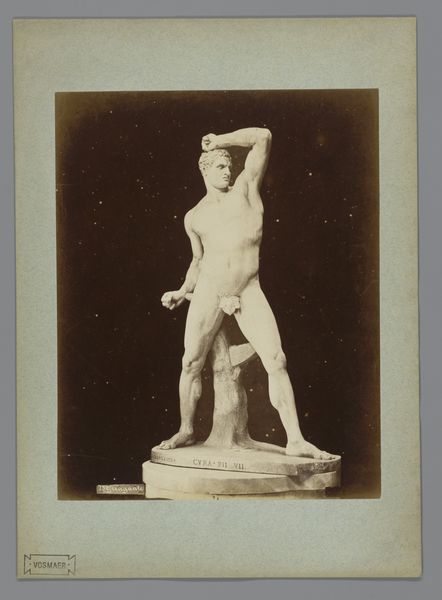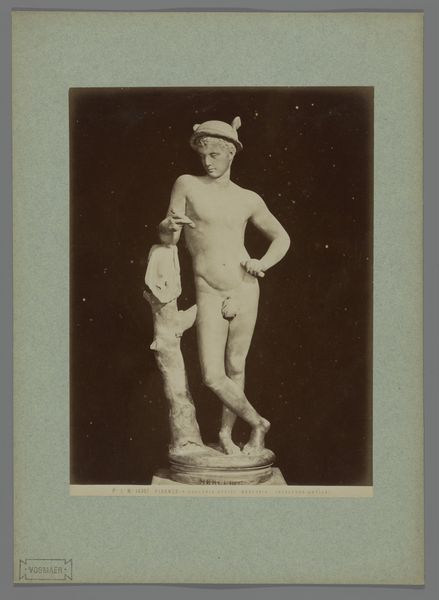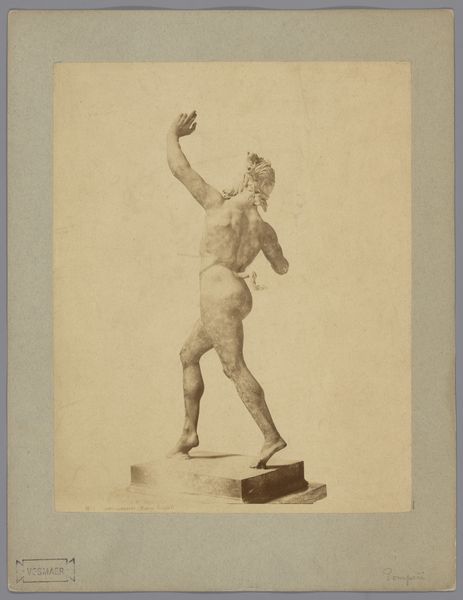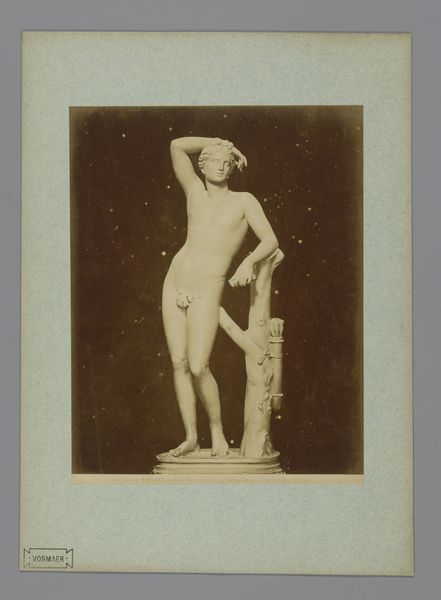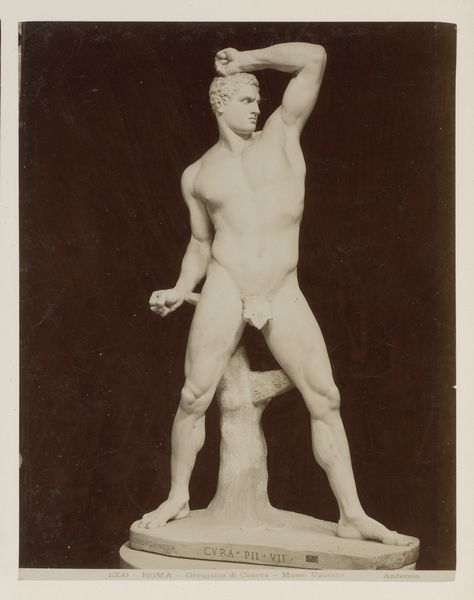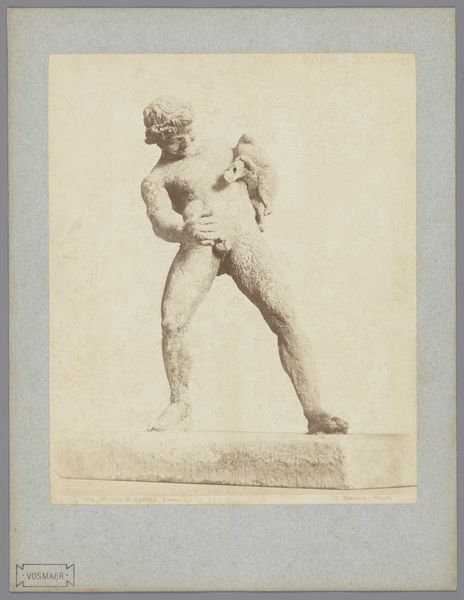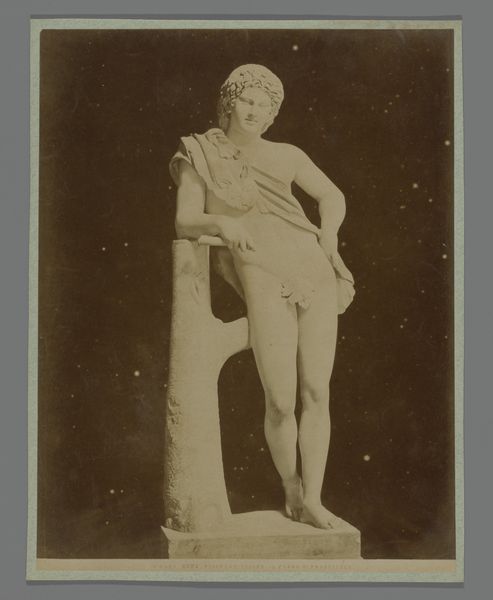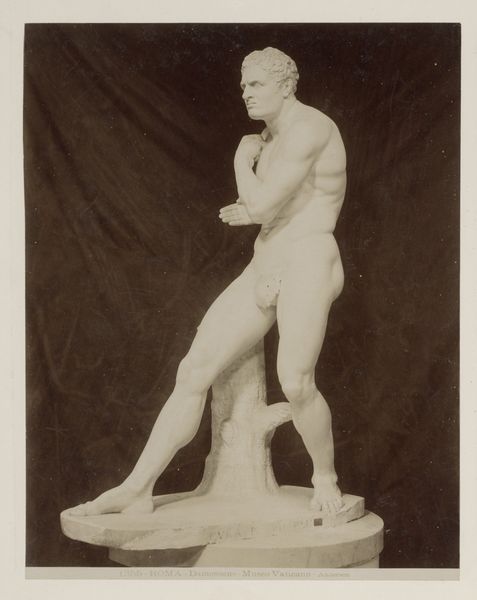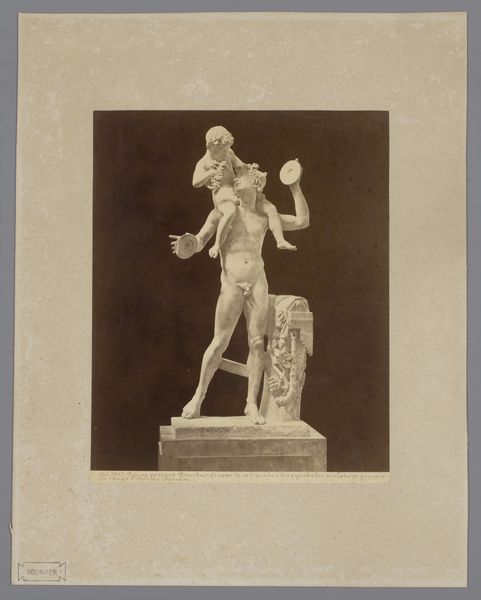
Sculptuur van de bokser Damosseno in de Vaticaanse Musea te Vaticaanstad, Italië 1851 - 1890
0:00
0:00
photography, sculpture, gelatin-silver-print
#
portrait
#
greek-and-roman-art
#
figuration
#
photography
#
sculpture
#
gelatin-silver-print
#
academic-art
#
nude
Dimensions: height 354 mm, width 255 mm
Copyright: Rijks Museum: Open Domain
Editor: This is a photograph of a sculpture called "Sculptuur van de bokser Damosseno in de Vaticaanse Musea te Vaticaanstad, Italië," dating from 1851 to 1890. The Rijksmuseum holds it. It's powerful; I feel a sense of contained energy and resilience emanating from the boxer. How do you interpret this work, looking at it through a critical lens? Curator: Considering its creation within a historical context deeply influenced by classical ideals, the sculpture represents much more than just an athlete. We see a celebration of the male body and a specific type of masculinity which raises questions about power, social hierarchies, and even colonialism. The boxer as a symbol is complex. Who gets to be the hero? Who is celebrated in this way? What socio-political forces might have played a role in immortalizing *this* figure in *this* way? Editor: That's a really interesting perspective I hadn't considered. It prompts me to reflect on the traditional canon. Do you think its presentation as a photograph further affects how we interpret it? Curator: Absolutely! Photography at this time was often used for documentation, but also to disseminate classical ideals. Consider who had access to these images, how they were used, and what narratives they reinforced or challenged. By freezing it in the photographic medium, how do those added layers inform, complicate, or obscure readings of this image, even today? Editor: I hadn't considered all the different contexts at play here; it certainly complicates what seemed like a simple representation of strength! Curator: Indeed. Examining the intersections of classical ideals, gender, power, and the photograph’s circulation can deepen our understanding of this single, still image. Editor: I’ll definitely carry that intersectional awareness into other works I encounter. Thanks so much!
Comments
No comments
Be the first to comment and join the conversation on the ultimate creative platform.
